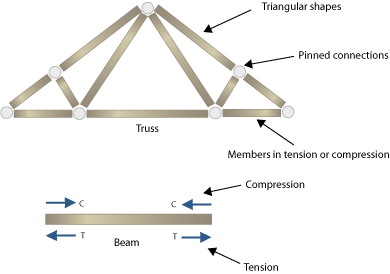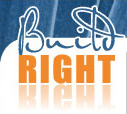Introduction
Roof trusses are load bearing frames constructed of connected triangular shapes. They take advantage of a triangle's natural attributes, its strength and its stability.
The members forming the triangles have pinned joints. These types of joints have the property that all the bending moments within the truss are eliminated. The members making up the truss are either in compression or tension, unlike beams which experience tension and compression at the same time. This is the reason that trusses are more efficient at supporting loads over wider spans than simple beams.
Note that other types of joints such as gang nailing are used in roof trusses. The tension and compression computations for these are different to those for pinned joints.
Comparison of truss and beam

